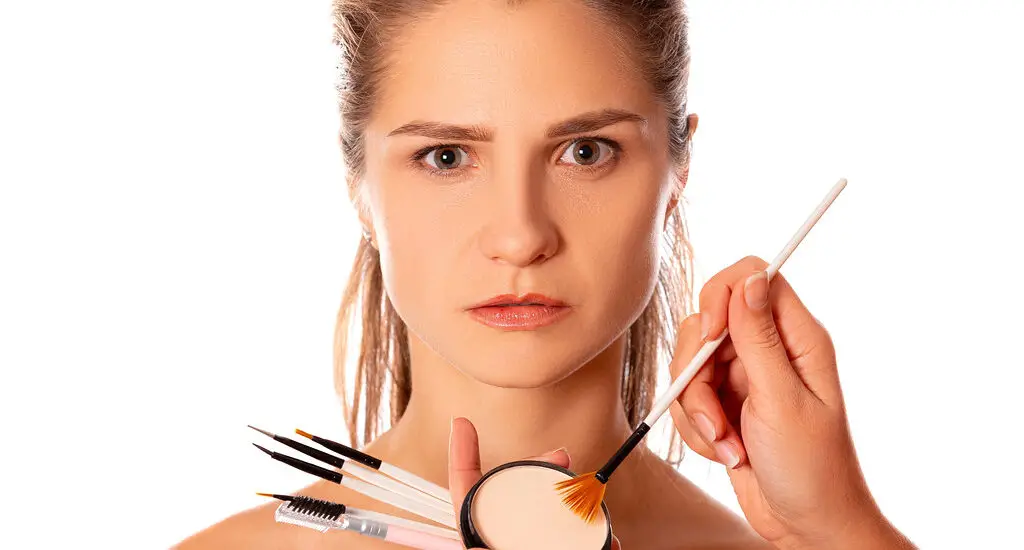Your skin after dermabrasion will feel sore and tender. It is crucial to know how to take care of your skin after the procedure to heal faster and better.

Table of Contents
How to Treat Skin After Dermabrasion
Take the following steps to care for your skin after dermabrasion:
Clean your skin after the procedure and wipe it with a suitable toner. Doing this helps clear any residual dead skin cells from the treatment. After that, ensure your skin dries before you apply a good moisturizer.
The moisturizer must suit your skin type and be rich enough to offer complete protection, creating a barrier to keep pollutants away. Keep using the moisturizer in this manner for the next one week; it will help your skin to heal faster and prevent too much peeling.
Ensure you apply sunscreen any time you have to go out, even if the sun is not out. You will still experience photosensitivity without sun rays, so it is best to protect your skin as much as possible until it heals. Better still, stay out from under the sun for about one week after the procedure. This is because radiation from the sun’s rays can cause excess pigmentation or even damage the skin.
Avoid every skincare product with additives and chemicals, even those that were good on your skin before the treatment. Also, keep from tanning rooms throughout the healing period. And avoid any other facial treatment, including waxing, for two weeks or more after the procedure to enable your skin to heal.
Keep your hands away from your skin as much as possible, especially when it starts peeling. The temptation to touch it will be high, but picking on your skin may lead to scars and pigmentation. You will help your skin heal nicely and fast if you stay hydrated. Therefore, drink lots of water and eat water-rich vegetables and fruits.
Your Skin After Dermabrasion
After the treatment, your skin will be swollen and red. It is from the effect of stripping the skin of some layers to reveal newer and younger skin. The treatment rids the skin of dead cells that nothing else seems to handle.
However, the swelling and redness will begin to fade over the next couple of days. Sometimes, the swelling will take weeks or months to disappear. During this time, the skin will be blotchy and highly sensitive. This is why you must protect it from sunlight as much as possible and avoid all harsh skincare products.
How Long Does It Take to Heal from Dermabrasion?
The time it takes for your skin to heal after dermabrasion will differ from one person to another. For some people, it will take a couple of weeks to see a reduction in the swelling and the effects of the healing process. For others, it will take longer to see changes. However, the skin may take up to three months before it fully and completely heals.
The treatment area and the depth of the treatment contribute to the length of time it takes to heal. The deeper the abrasion during the treatment, the longer it will take to heal. Also, the larger the area of treatment, the more time it needs to heal.
How to Reduce Redness After Dermabrasion
Skin redness will fade with time after the treatment. There is not much you can do about it, except keep it hydrated. Use a rich moisturizer after washing, toning, and allowing your skin to dry. Do it daily and avoid using a harsh product. Always apply sunscreen when going out, but keep out from under the sun for fourteen days immediately after the treatment.
Click here to read these interesting articles…
Skin After Birth [Problems & Remedies]
Skin After Circumcision [Problems, Remedies & Care]
Skin After Cellulitis [Problems & Treatments]
Skin After Chemo [Problems & Remedies]
Skin After Chicken Pox [Problems & Remedies]
Who Should Avoid Dermabrasion?
People with active acne should not use dermabrasion as a form of treatment to remove scars or black spots. The treatment is likely to cause infection, which is a more serious condition than spots or scars. Also, you risk having flare-ups if you have skin reactions, allergic rashes, cold sores, burns, radiation treatments, chemical peels, and fevers from blisters.
While anyone is free to undergo the treatment, people of color have a higher risk of skin discoloration. In other words, you may have permanent skin discoloration if you are dark-skinned, Black, or Asian.
Skin Peeling After Dermabrasion – Remedy
Use more moisturizer than you are used to if your skin starts peeling after dermabrasion. While it is not unusual to have flaky skin after the treatment, it may irritate you. Fortunately, the peeling resolves in about a week with the help of recommended skincare products.
You may experience dry skin, which manifests as peeling skin, after the procedure. It will be worse for you if you naturally have dry skin. Oily skin may not feel the peeling as much but will experience some relief that the oiliness reduces.
Quick Recap
Ensure you carefully take care of your skin after dermabrasion to help it heal faster. Always apply enough moisturizer after washing the treated skin area and cover it with protective clothing and sunscreen if you must go out. Ideally, you should avoid the sun until you heal.
It is important to note that redness and swelling of the skin should begin to resolve after several days. The same is true for any accompanying pain. But contact your doctor if the redness becomes worse, the swelling does not go down, and the pain increases. It helps to have a consultation with your specialist before undergoing the treatment, especially if you have medical conditions.

